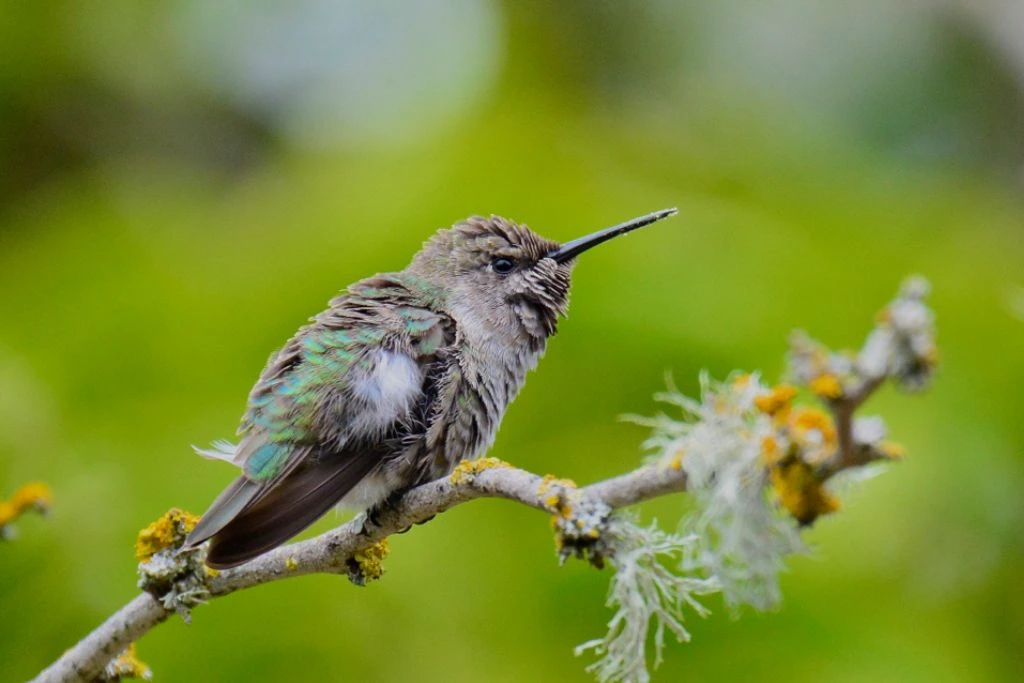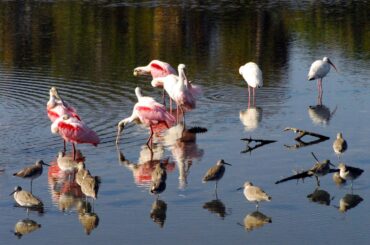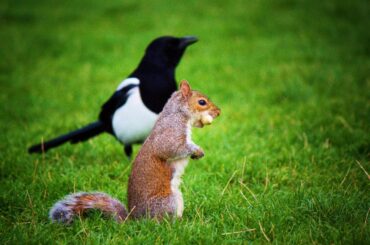Have you ever considered where these small, vibrant animals go when the sun goes down? Where do hummingbirds rest at night? Do they have places they go to at night that they call home?
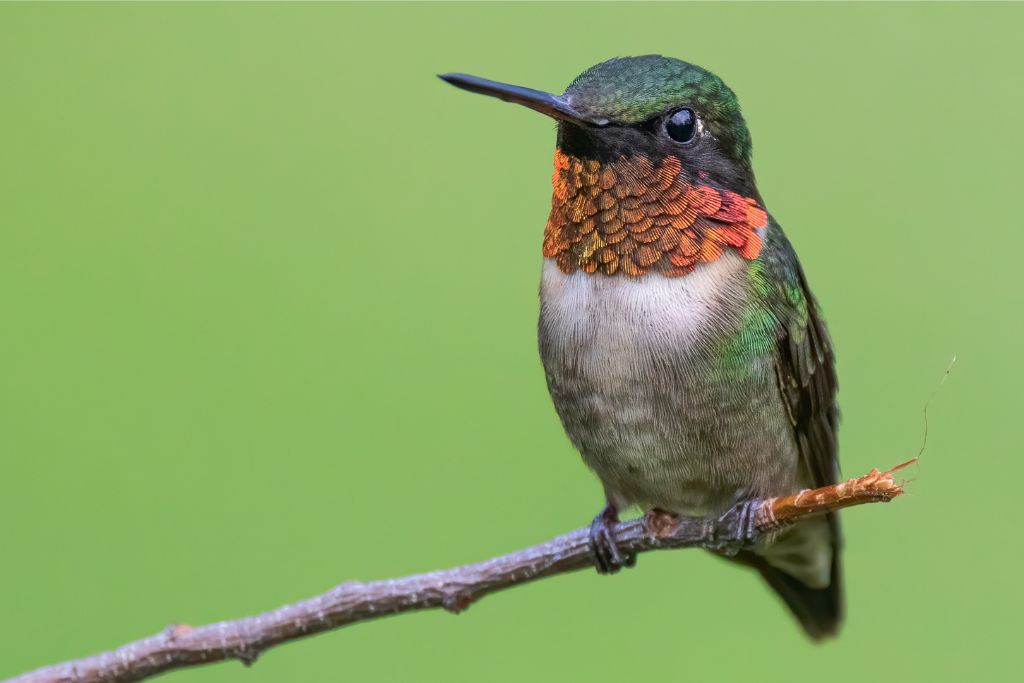
With their sparkly feathers and fast wingbeats, hummingbirds do amazing things at night and during the day. Most of the time, these tiny birds are about the size of your palm. They have their ways of finding a safe place to rest their wings.
Explore the magical world of hummingbird sleep patterns and discover their secrets.
When the sun goes down, and most birds sleep, hummingbirds move around. Hummingbirds sleep in a different way than birds that build nests.
This article shows that hummingbirds rest in strange places. Read on to find out where hummingbirds sleep and what makes their ways of resting so different after a day of eating nectar and flying around.
The Fascinating World of Hummingbirds
More than 300 kinds of hummingbirds are in the Americas, making them very interesting. These small dynamos’ vibrant greens, blues, and fiery reds are mesmerizing. The violet-crowned woodnymph and the ruby-throated hummingbird are both beautiful in their own ways.
Hummingbirds are known for how agile and quick they are. Many of their wings beat about 50 times per second. Their wings move so fast that they can hang in the air.
Because of this, they are the only birds that can fly forward, backward, and even upside down. They have long, specialized bills that let them sip juice from flowers with great accuracy.
The next time you see a hummingbird flying through your yard, be amazed at how different and well they can fly. Their quickness and speed show how diverse and creative birds and nature are.
Where Do Hummingbirds Sleep?
Despite what many people think, hummingbirds do sleep. But they do it in a way that no one else does. Instead of deep sleep, they enter a state called “torpor.”
When in torpor, hummingbirds conserve energy by slowing their metabolism and cooling their bodies. This semi-hibernation helps them through the harsh winter evenings when food is scarce.
Now, let’s explore the fascinating places where these tiny birds spend their nights:
Tree Branches
Hummingbirds like to sleep on tree branches. These small birds like trees because they give them a safe, high place to sit where they can watch out for snakes and other animals that might try to eat them. They can avoid cold ground drafts when they are high up.
Shrubs
At night, hummingbirds sleep in plants with many leaves. The big leaves on shrubs protect them from wind and rain. The tangled branches also hide hummingbirds from shooters who come out in the evening. These small places in the bushes are great places to sleep because they are safe and cozy.
Nests
Some hummingbirds make nests to sleep in. Made with care from spider silk and plant fibers, these nests are great places to raise young and relax. Like a bedroom that is built in! They feel safe in their nests because they’ve been there during the day. So, these birds use houses to lay their eggs and to stay warm at night.
Vines
Honeysuckle and trumpet creeper vines are hummingbird hammocks. They keep these small birds safe with their long branches that hang down. Hummingbirds like to rest on plants and eat nectar-filled flowers at night. These places are good for hummingbirds to rest and eat because they have bright flowers and vines to protect them.
Under Eaves
Building eaves can shelter hummingbirds. They can sleep here without getting wet or scared because it keeps the rain and wind away. This choice has some pros and some cons.
It keeps them dry and safe, but things like bright lights outside might wake them up. Hummingbirds find it helpful to nest under eaves, but they must be careful.
Tall Grasses
During the warmer months, hummingbirds may sleep in tall grasses. The camouflage on these plants helps them hide from animals that hunt at night. These tall stalks slowly move back and forth in the wind, which may help them fall asleep.
Hanging Baskets
Hummingbirds like to rest in flower baskets or pots that hang from the ceiling. These hanging baskets offer a peaceful place to hide and escape dangers on the ground.
The flowers on the baskets can provide food for insects late at night. These tiny birds like hanging boxes because they are cozy and make getting food easy.
Spider Silk
Spider silk is used to make nests for hummingbirds. Strong and bendable, spider silk is great for making cup-shaped nests. There is protection and structural stability.
As the baby hummingbirds grow, the silk grows to fit them snugly. The baby hummingbirds are kept warm and safe while they sleep and grow with this wonderful material.
Thick Foliage
Hummingbirds need lush foliage on bushes and trees for roosting. They are protected from rain and wind by the thick leaves. Some hummingbirds like to rest on soft plant leaves. They like to sleep in these green places because they are safe, comfortable, and close to food.
Wire or Clotheslines
On thin wires or clotheslines, hummingbirds can rest. They use their agile feet to hold onto these thin structures.
This option offers safety from both aerial and ground predators, but it also has risks. These places may have gusty winds or quick moves, so hummingbirds need to stay alert.

Where Do Hummingbirds Sleep at Night?
Hummingbirds save energy at night by going into “torpor.” In torpor, their metabolism and body temperature drop by a lot so they can save energy for cold nights and times when there isn’t enough food.
Weather and hazards affect hummingbird sleep duration. When it’s cold at night, people sleep longer because it takes time for their body temperature to rise in the morning. The safety of a roosting spot affects their sleep length, with more risks requiring a faster exit.
Most hummingbirds sleep for 12 hours, from dusk until dawn. This long nap gives them the energy to fly and feed themselves the next day.
Where Do Hummingbirds Sleep When It Rains
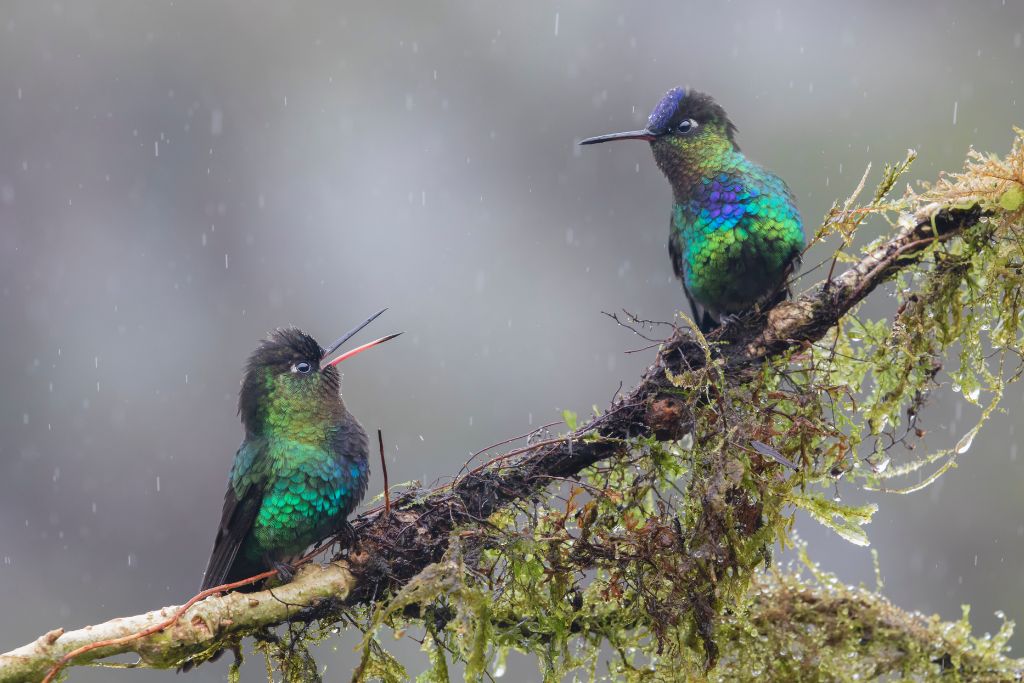
Weather, especially rain, affects where and how hummingbirds sleep. These tiny birds must find shelter when it rains to avoid getting damp since their bodies lose heat quickly. Hummers prefer sleeping in large-leafed trees to prevent this.
They are great for keeping rain and wind away because the broad leaves cover them.
So, when it starts to rain, hummingbirds look for green refuge in their favorite trees to ensure they have a dry place to sleep on rainy nights.
Where Do Hummingbirds Sleep During the Day?
Hummingbirds can sleep during the day, which is a bit strange. This happens when someone has a cold or is sick. These hummingbirds may have little energy and need to save it by sleeping during the day. This lets them rest and get better. But hummingbirds are primarily active during the day, so they rarely do sleep during this time.
Final Thoughts
Watching hummingbirds is a great way to learn about nature. These small, colorful birds with incredible flying abilities show us how delicate Earth’s balance is.
To protect these special birds and the life they support, we should respect their homes and provide them with nectar-rich flowers and safe resting spots. Let’s appreciate nature and work together to preserve it for future generations.
FAQs
What is the Sleep Pattern for Hummingbirds?
Hummingbirds typically sleep at night, from dusk to dawn, for about 12 hours.
How Can You Tell if a Hummingbird is Sleeping?
A sleeping hummingbird is hard to spot since they close their eyes and sit stationary on a limb or feeder. Closed eyes and inactivity are the main signs of a hummingbird sleeping.

